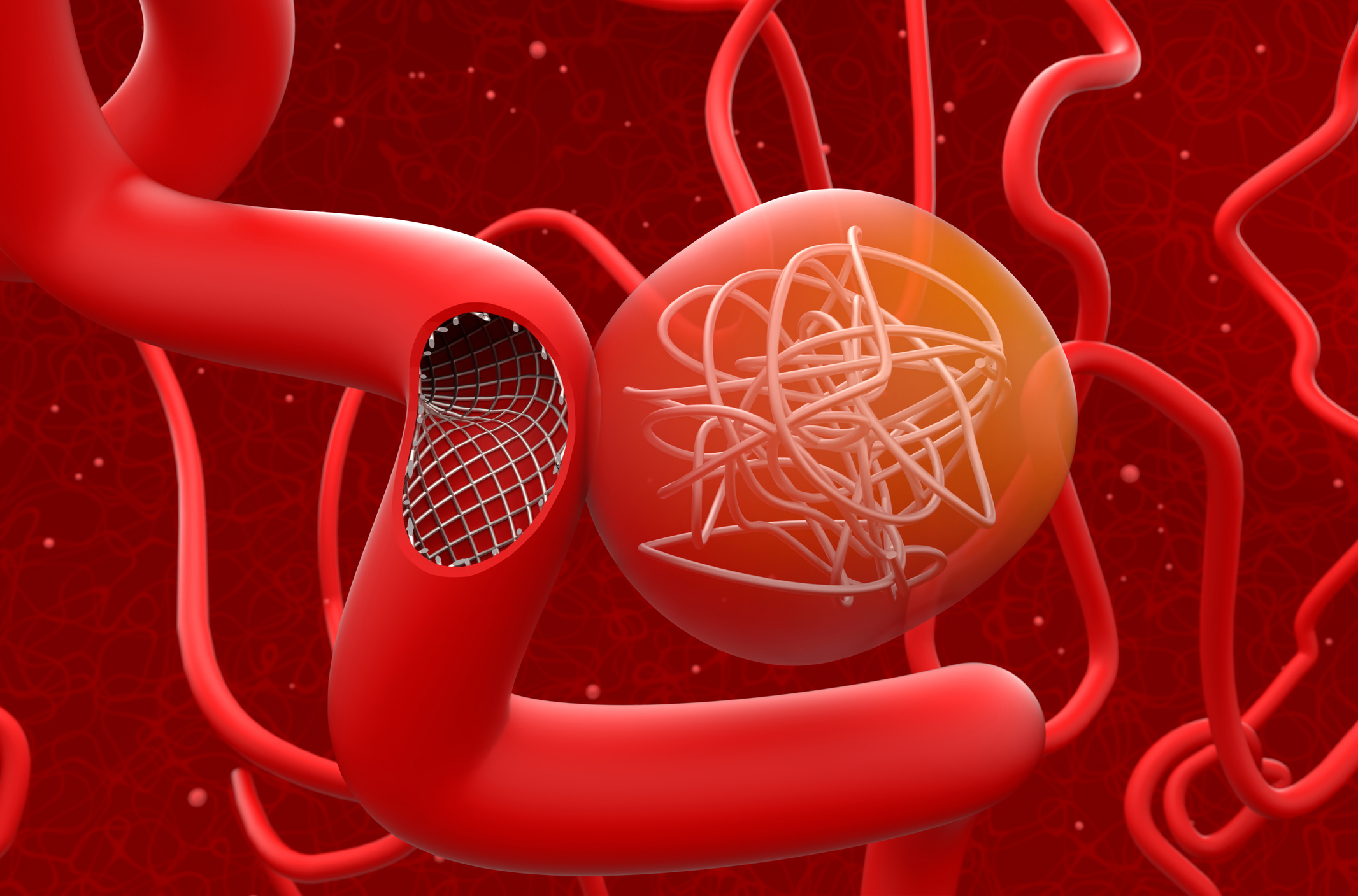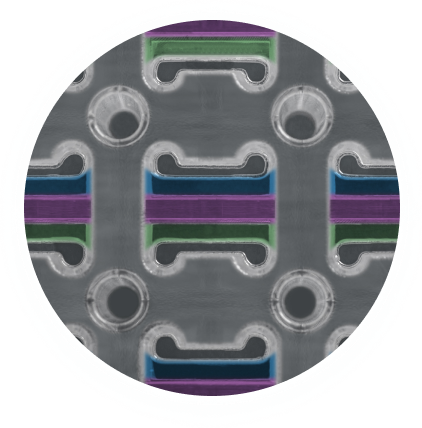Flow diverters (FDs) have become central to the treatment of intracranial aneurysms, offering a minimally invasive method to promote vessel healing and aneurysm exclusion. One of the most critical aspects of FD design is radiopacity – the ability of the device to be visualized under X-ray or fluoroscopic guidance. This blog explores the role of radiopaque materials in flow diverters, supported by engineering and clinical data – and highlights how Smart Reactors’ Camouflage™ coating technology enhances the performance and visibility of these cutting-edge devices.
The Importance of Radiopacity in Flow Diverter Procedures
Radiopacity refers to a material’s ability to absorb X-rays and appear clearly under fluoroscopy. It is vital in neurointerventional procedures because:
- It ensures precise placement of the device
- It supports real-time procedural navigation
- It enables accurate follow-up imaging and assessment of device behavior

Since base materials like nitinol or cobalt-nickel-chromium alloys offer limited natural visibility under imaging. Radiopaque components are incorporated into the device structure to address this limitation.
Radiopaque Materials Commonly Used in Flow Diverters
The table below highlights various radiopaque materials commonly used in flow diverters detailing their density, key characteristics, and roles in flow diverter design.
| Material | Density | Key Characteristics | Use in Flow Diverters |
| Platinum / Platinum-Tungsten | 19.75–21.45 g/cm³ | Excellent X-ray visibility, corrosion resistance, and biocompatibe | Commonly used for wire integration or as radiopaque markers in endovascular implants |
| Tantalum | 16.65 g/cm³ | Strong radiographic contrast, long-term stability, and excellent corrosion resistance | Often used in marker bands or interwoven into stent structures to enhance visibility |
| Drawn Filled Tubing (DFT) Wires | Composite: inner radiopaque core (e.g., platinum or tantalum); outer biocompatible shell (e.g., nitinol or cobalt-chromium) | Uniform radiopacity, flexibility, superelasticity, and mechanical strength | Used to maintain device visibility along the entire length while preserving structural performance and flexibility |
Material Selection: Balancing Visibility and Functionality
FDs must maintain a delicate balance between visibility and structural performance. Key considerations include:
- Elastic modulus and strain limit: Nitinol offers high flexibility, while cobalt-chromium provides greater stiffness.
- Mechanical integrity: Wire diameter, braid geometry, and radial force affect deployment and wall apposition.
- Imaging compatibility: Radiopaque materials should enhance fluoroscopic visibility without degrading MRI or CT follow-up imaging
Composite wire designs, such as DFT wires, are increasingly used to unify visibility and mechanical strength in a single solution.
Complementing Radiopacity with Surface Coatings
Radiopacity enhances visual guidance, but surface coatings play a vital role in biological performance. Devices are increasingly treated or coated to improve:
- Thromboresistance
- Endothelialization
- Device deliverability
At Smart Reactors, our Camouflage™ coating supports these goals by reducing thrombogenicity and promoting endothelial cell coverage—critical for safe healing after FD implantation. Smart Reactors Camouflage coating is fully compatible with common FD materials, including those enhanced with radiopaque elements like platinum and tantalum.
Emerging Innovations in Flow Diverter Design and Radiopaque Integration
As flow diverters evolve, researchers are developing novel strategies to improve visibility, compatibility, and clinical outcomes. Current innovations include:
- Nitric oxide–releasing coatings to reduce clot formation and stimulate healing
- Hydrophilic glycan-based coatings enabling reduced antiplatelet therapy
- Bioresorbable FDs designed to degrade after vessel healing is complete
Computational modeling is also being used to optimize wire braiding, pore density, and blood flow dynamics in future FD designs. Radiopaque enhancements will continue to play a central role in enabling safe, effective deployment and imaging.
Smart Reactors Camouflage: Optimizing Flow Diverter with Radiopaque and Antithrombogenic Coatings
Radiopaque elements are essential for clinical success, but their integration must be harmonized with device flexibility, durability, and biocompatibility. Devices that combine high-contrast visualization with low-thrombogenic coatings are better suited to meet modern procedural demands.
Smart Reactors’ Camouflage™ coating technology enables next-generation flow diverters to achieve superior biological response without compromising the visibility or mechanical function of radiopaque materials.
Interested in enhancing your flow diverter with an advanced biocompatible coating?
Explore how Camouflage™ can elevate your device’s clinical performance. Contact Smart Reactors to get in touch with our team today.
Share this post: on LinkedIn

